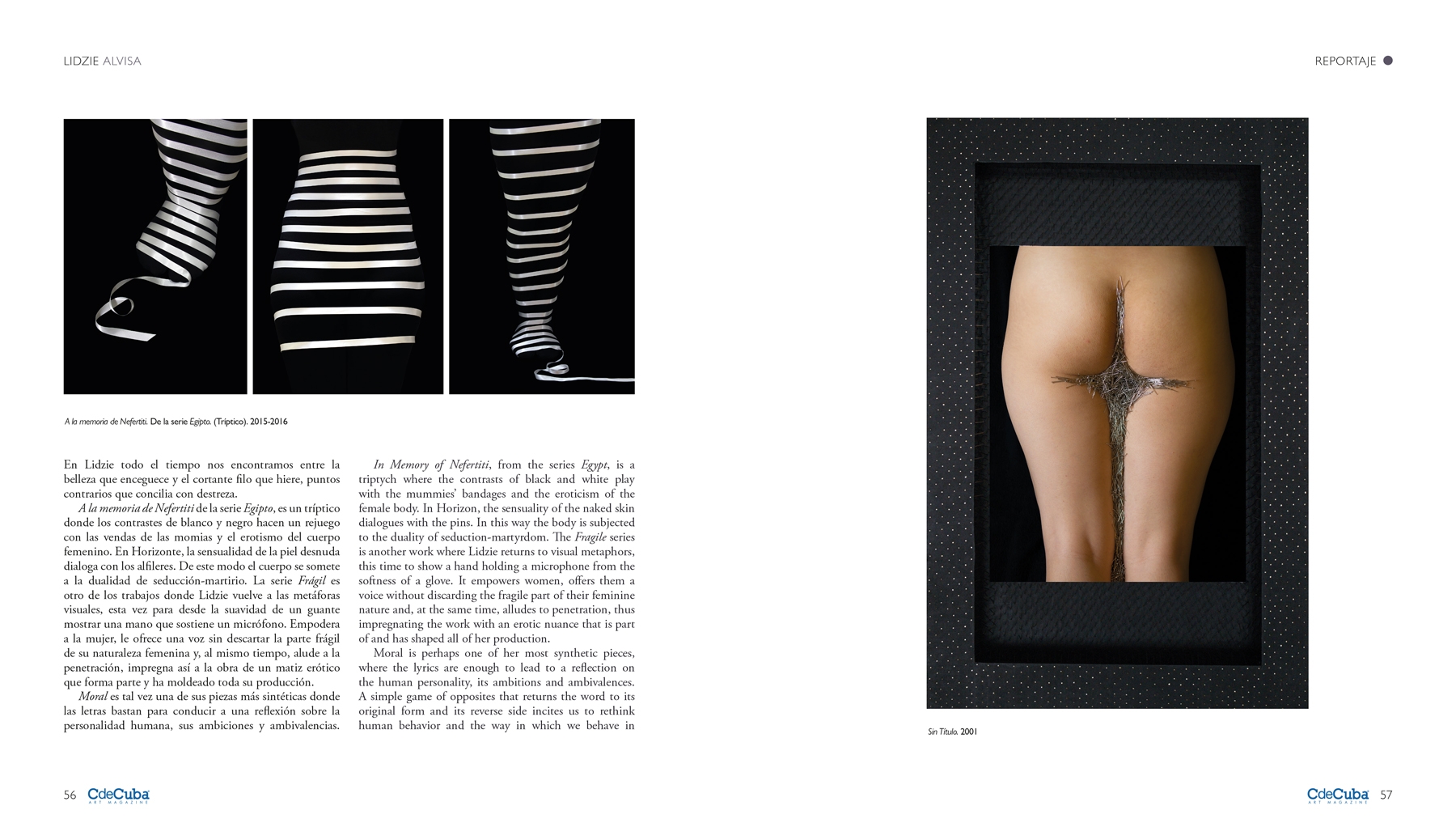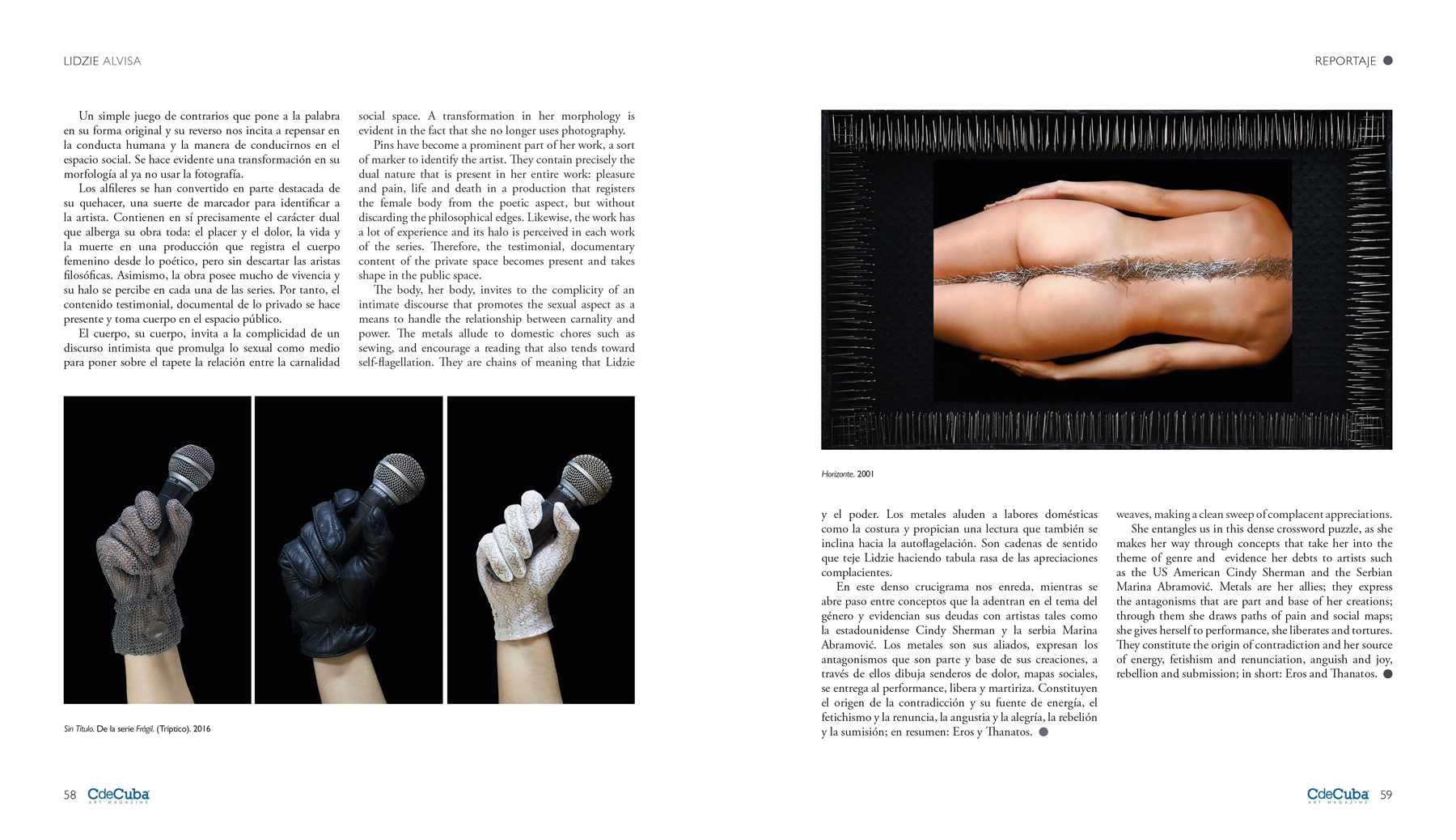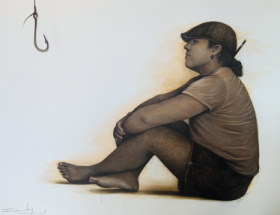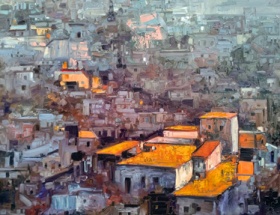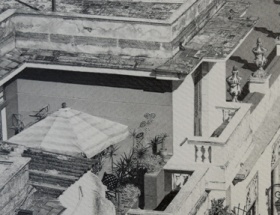Eros and Thanatos
By Estela Ferrer
I have always believed that there is a bipolar force in the creations of artist Lidzie Alvisa, who in 1989 concluded her studies at San Alejandro Fine Arts Academy and later graduated from the Higher Institute of Art (ISA), a duality that makes them attractive, aesthetically subjugating and bearers of a transformative energy that gives continuity to the legacy of other female voices.
Their morphology would link them to the best structural traditions, evidenced in multiple aspects in favor of a balanced use of color, and harmony between the added objects belonging to the factual universe and their own naked skin. Her proposal is articulated and takes on vigor in this interstice where private and public come into contact, since her pieces seriously discuss situations that affect her entire genre, without localisms.
However, this would perhaps lead her to be only an artist who knows how to resolve her pieces formally and would leave out her caution not to repeat herself and her ability to shape a female cosmos in which the most important thing is precisely what is not represented. In the insinuated, veiled, underlying strategies that beat in her making is, in my opinion, where she manages to be more effective and move away from other artists who bet on the literal representation of gender problems.
That is why the dichotomy between Eros and Thanatos immediately emerges as one of the paths from which her production could be analyzed. Thanatos: in psychoanalytic theory, it is the death drive opposed to the libido or the so-called Eros or life drive. In Lidzie we always stand between the beauty that blinds and the sharp edge that hurts, opposite points that she skillfully reconciles.
In Memory of Nefertiti, from the series Egypt, is a triptych where the contrasts of black and white play with the mummies’ bandages and the eroticism of the female body. In Horizon, the sensuality of the naked skin dialogues with the pins. In this way the body is subjected to the duality of seduction-martyrdom. The Fragile series is another work where Lidzie returns to visual metaphors, this time to show a hand holding a microphone from the softness of a glove. It empowers women, offers them a voice without discarding the fragile part of their feminine nature and, at the same time, alludes to penetration, thus impregnating the work with an erotic nuance that is part of and has shaped all of her production.
Moral is perhaps one of her most synthetic pieces, where the lyrics are enough to lead to a reflection on the human personality, its ambitions and ambivalences. A simple game of opposites that returns the word to its original form and its reverse side incites us to rethink human behavior and the way in which we behave in social space. A transformation in her morphology is evident in the fact that she no longer uses photography.
Pins have become a prominent part of her work, a sort of marker to identify the artist. They contain precisely the dual nature that is present in her entire work: pleasure and pain, life and death in a production that registers the female body from the poetic aspect, but without discarding the philosophical edges. Likewise, the work has a lot of experience and its halo is perceived in each work of the series. Therefore, the testimonial, documentary content of the private space becomes present and takes shape in the public space.
The body, her body, invites to the complicity of an intimate discourse that promotes the sexual aspect as a means to handle the relationship between carnality and power. The metals allude to domestic chores such as sewing, and encourage a reading that also tends toward self-flagellation. They are chains of meaning that Lidzie weaves, making a clean sweep of complacent appreciations.
She entangles us in this dense crossword puzzle, as she makes her way through concepts that take her into the theme of genre and evidence her debts to artists such as the US American Cindy Sherman and the Serbian Marina Abramović. Metals are her allies; they express the antagonisms that are part and base of her creations; through them she draws paths of pain and social maps; she gives herself to performance, she liberates and tortures. They constitute the origin of contradiction and her source of energy, fetishism and renunciation, anguish and joy, rebellion and submission; in short: Eros and Thanatos.

